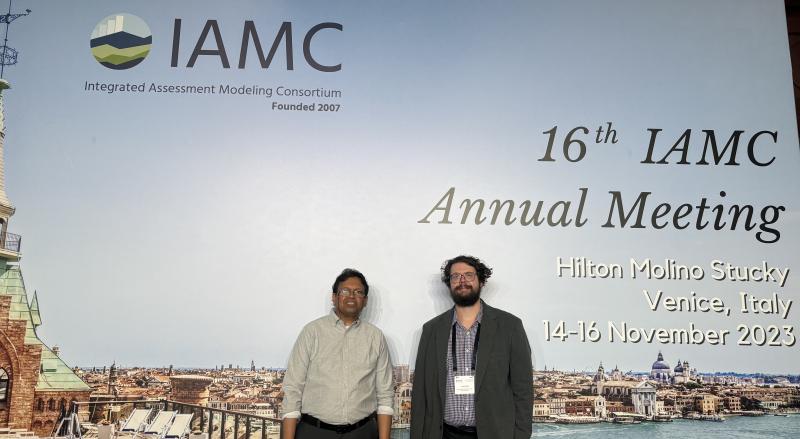Researchers at Pardee Center Make Impactful Presentations at the IAMC Annual Meeting in Venice
The universal secondary education target of the Sustainable Development Goals (SDGs) faces a bleak outlook, as revealed by Researchers at the Pardee Center for International Futures at the 16th Integrated Assessment Model (IAMC) annual meeting in Venice, Italy.
Presenting during a session on Shared Socioeconomic Pathways (SSP), Mohammod Irfan, Ph.D., a Senior Scientist disclosed findings from a collaborative study with Drs. Brian O’Neil, Jonathan Moyer, and Barry Hughes utilize the Pardee Center’s signature International Futures integrated assessment model (IAM). The Shared Socioeconomic Pathways (SSP) framework is a widely utilized tool for understanding socioeconomic development trends in the world with climate change and exploring the different challenges for mitigation and adaptation that follow.
The alarming results suggest that, even under the most optimistic SSP scenario (SSP5), the SDGs' aspiring secondary education goal would not be attained. This reveals a persistent divergence in schooling levels between low and high-income countries that is expected to endure until mid-century.
The second set of results presented by Dr. Irfan offered valuable insights into IAMC's mission of model diagnostics and comparison. The study revealed a difference in the trajectory of educational attainment stock between their structural model and that of the International Institute for Applied Systems Analysis (IIASA), which uses statistical techniques without directly representing underlying schooling flows.
Meanwhile, Caleb Petry, a Model Development Research Associate at the Pardee Center for International Futures presented the accuracy of IFs projections, comparing base case projections with Shared Socioeconomic Pathways (SSP) projections from other modeling groups.
His presentation sought to understand the wide uncertainty space created by the Shared Socioeconomic Pathways and Representative Concentration Pathways scenarios.
The presentations generated a flurry of questions and feedback from the audience. In addition to presenting their work, Petry and Irfan actively participated in inaugural and plenary sessions, engaging in discussions on the role of scenarios in shaping global climate research.
The IAMC meeting serves as a dynamic platform for the exchange of ideas, insights, and advancements in the field of integrated assessment modeling. By fostering an environment of inclusivity, the IAMC Annual Meeting encourages the active participation of individuals who are contributing to the collective knowledge and progress in this critical scientific domain.
The topics presented at the conference by Petry and Irfan connect to the Pardee Center’s mission to build and use data and tools to analyze complex world and long-term dynamics of change in human, social, and natural systems.
